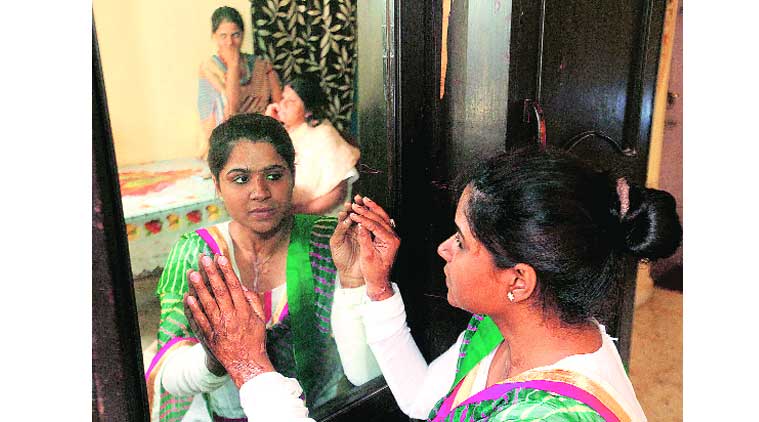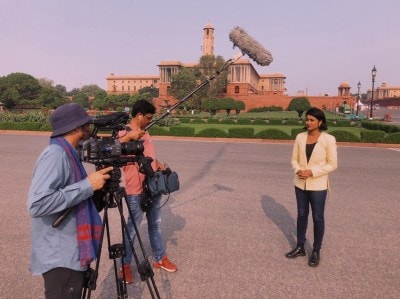- India
- International
Surviving the scars: Facing a fight at every turn
A Newsline series on the lives of acid attack survivors.
 Aarti Thakur at her family residence at Nalasopara in Thane district. (Source: Express Photo by Dilip Kagda)
Aarti Thakur at her family residence at Nalasopara in Thane district. (Source: Express Photo by Dilip Kagda)
The recent Supreme Court order on free medical treatment was a huge relief to victims of acid attacks, but their struggle has only begun. A state government scheme for them can be implemented better. Crisis centres face teething troubles. The city is yet to get comfortable with their scars. A Newsline series on the lives of acid attack survivors
Three years after she felt the skin on her neck and chest melt when a man threw acid on her at Goregaon railway station, Aarti Thakur walked into the Bombay High Court complex last month with a growing realisation that her ordeal was nowhere near over. Denied compensation by the state, the 25-year-old former marketing executive had decided to move high court, where she would be told later that she was not eligible for compensation due to a ‘cut-off date’ for eligibility under the government’s relief scheme.
The court would go on to rap the Maharashtra government and order that it pay up, but not before Aarti’s case threw a spotlight on the plight of victims of brutal chemical attacks for whom a slew of government schemes and initiatives remain somehow inaccessible.
The scheme the Maharashtra government refused to consider Aarti under is the Manodhairya scheme, launched in October 2013 for women and child victims of rape, sexual assault and acid attacks. Its implementation is itself patchy, as are other measures including a single-point crisis centre and sensitisation of the police force.
On paper, Manodhairya envisions providing financial assistance as well as psychological counselling to victims. In the 15 months since implementation began, two people have been compensated in Mumbai’s suburbs — there has been no FIR in the city since the scheme’s launch.

In Aarti’s case, the state’s contention was that she was attacked in January 2012, long before the scheme was implemented. The HC order called the cut-off date “arbitrary” and in contravention of the spirit of the the Supreme Court’s directions. (Manodhairya was formulated based on directions given by the SC in Laxmi vs Union of India, on July 18, 2013.)
Devapriya Mukherjee from Human Rights Law Network, one of Aarti’s lawyers, said her case was a prime example of dereliction of duty by the police. “She was attacked twice before the acid attack. But the police refused to file an FIR in those cases.”
But she’s angrier about how the cut-off date, stating that it makes the Manodhairya scheme more or less infructuous. “Before we approached the HC, we made an application to Mantralaya seeking compensation but they verbally told us it wasn’t possible because Aarti was attacked after the cut-off date,” she says. Aarti, a resident of Nallasopara and the only earning member, is now looking for a job after a previous contract with an investment firm ended. She’s also in touch with NGOs that came forward with assistance.
But the cut-off date is not the only problem with the scheme’s implementation.
During hearings in another PIL, faced with questions on the Manodhairya scheme, the state cited paucity of funds. “They initially said they have Rs 5 crore for the cause. I argued that you cannot decide compensation based on the money you have. Compensation has to be independent of that,” says human rights lawyer Mihir Desai.
The funds issue is a thorny one: The HC order in Aarti Thakur’s case said the apex court had directed that Rs 3 lakh be paid initially. “The order does not put any cap on the amount,” the order said. But under Manodhairya, for now, financial assistance varies between Rs 50,000 and Rs 3 lakh, the latter sum only if there is disfigurement of the face resulting in permanent disability.
That ceiling, agree surgeons, would force survivors without ample means to either struggle with fund raising or simply abandon later surgeries. plastic surgery involving face reconstruction can cost over Rs 30 lakh.
Plastic surgeon Dr Suhas Abhyankar, who is treating an acid attack victim since September 2012 at the D Y Patil Institute, Nerul, says he has lost count of the surgeries performed on her. “Mabiya Khan had lost her vision and her eye lids melted due to the acid,” Abhyankar says. She will undergo a cornea transplant soon and surgery to reconstruct her eye-lid.
“In a private hospital, the cost would exceed Rs 25 lakh. Here, we’re treating her at no cost through various NGOs’ support,” says hospital superintendent Dr Shyam More.
Khan, of course, has not yet been compensated. Her family has never heard of Manodhairya.
mumbai.newsline@expressindia.com
Must Read
Apr 23: Latest News
- 01
- 02
- 03
- 04
- 05






































